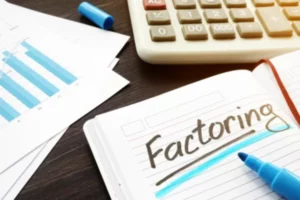People starting a business usually decide to launch their projects to get more money. But even if a business owner manages to generate significant income, they might encounter difficulties with paying themselves.
Owning a business means that you have to invest enough into business so it can thrive while also paying yourself a fair amount. In most cases, business owners simply don’t know which payment method to choose and how much to pay themselves without getting into trouble with the IRS.
Business owners may choose between different payment methods, such as owner’s draw, salary, dividends, etc. But which method to choose? And what does the IRS say about these methods?
Keep reading the article to learn more about the most popular payment methods: owners draw and salary. And check out how much money you can expect to get in both of these cases.
Owner’s Draw Method
An owner’s draw is money that an owner or a co-owner of a business takes from a company registered under the following structures:
- sole proprietorship;
- partnership;
- limited liability company.
Such a business structure as S-corm can’t take the owner’s draw since the profit is distributed in the form of dividends. Dividends depend on the percentage of ownership a taxpayer has invested in the business.
Overall, a draw is a single withdrawal of any amount of money from the company’s funds. The amount of money to withdraw depends on their owner’s equity.
The owner’s equity means an individual’s share of the business’ assets. It’s the amount an owner invested and profits that the business made thanks to the investment. If an individual invests $30,000 into a business entity and their share of profit is $18,000, then their owner’s equity is at $48,000.
Suppose the owner draws $20,000, then the owner’s equity is reduced to $28,000. When choosing owner’s draw, business owners should consider taxes. They have to pay income tax on all their profits for the year regardless of how much money they draw. The IRS also wants business owners to pay self-employment, Social Security, Medicare, and estimated taxes.
What does Draw Means for Income Taxes?
When a business owner chooses the draw method, they should understand how to pay taxes. The method depends on the chosen business structure. Check details below.
Taxes and Sole-Proprietorships
Sole proprietors can distribute profit gained by a company as they prefer. Sole proprietors don’t have to report to any investors, stockholders, or shareholders. This means they can take profits as they prefer.
According to the IRS, sole proprietors’ draw is not personal income, so they aren’t taxed as such. A draw is a distribution of income, and it will be assigned to the business owner and taxed. However, the draw has no effect on the tax.
Taxes and Partnerships
The IRS sees partnerships similarly to sole proprietors. Any revenue gained by partnerships is considered personal revenue. However, the overall income isn’t assigned to one person but to partners according to their shares. In simple words, the IRS expects partnerships to divide profit and report returns accordingly.
Taxes and LLCs
Limited Liability Companies must follow the rules set by each state. Before choosing between a draw or a salary, consider checking these rules.
Advantages and Disadvantages of Owner’s Draw Method
The main advantage of the draw method is its flexible compensation based on business performance.
And the method also has a disadvantage: difficulties when it comes to planning taxes.
Even though it’s convenient to use the owner’s draw when the owner needs cash, it might require more tax planning. The business owner has to take care of quarterly tax estimates and self-employment taxes, etc.
Salary Method
Paying yourself a salary from owning a business means setting a fixed amount of money and paying each period. In this case, the owner of the company has to apply withholdings to their salary, just like in the case of every employee.
The company has to officially withhold taxes from each paycheck and pay them to the IRS on behalf of a company owner. Such a method is convenient since the business owner pays taxes on time. Moreover, it’s beneficial for the company since it attains a healthy cash flow.
The IRS requires S-corps and C-corps owners who run their businesses to take salaries rather than consider draws. However, they should make sure to include reasonable levels of compensation.
Advantages and Disadvantages of the Salary Method
Advantages of the salary method include:
- Fewer worries with taxes. Receiving a paycheck means that federal personal income taxes are already deducted.
- Consistent income. Having a consistent and steady income is beneficial if an individual is considering getting a mortgage or a credit.
- Easier to track business expenses and manage the cash flow of a company. Draws often bring management problems since the budget loses a significant amount of money. It’s not the case when receiving a salary.
The method also has some disadvantages:
- The need to determine reasonable compensation. If a business owner’s salary is too big, they may get questions from the IRS. Business owners have to consider various factors when setting a salary (more on salaries further in the article.)
How to Determine Your Salary?
As mentioned, the IRS expects business owners to get reasonable compensation. But what does the agency mean when they say “reasonable.” Most experts recommend having a modest salary — as modest as possible.
A modest salary means you would have to pay fewer taxes and invest more money into your business. Before setting a salary, calculate your expenses. A salary should cover these expenses and leave some funds to set aside.
It’s a great idea to ask for the help of an accountant. Qualified accountants can help with calculating taxes, and based on these calculations, they may suggest how much to pay yourself.
Business Classification and Choosing a Payment Method
There is more than one factor that should be considered before choosing a payment method. A business owner may set a salary, choose a draw, or have dividends, but in some cases, the business structure may determine the payment method. Here are those business structures that impact this decision:
- C corporation (C corp);
- S corporation (S corp);
- sole proprietorship;
- partnership;
- Limited Liability Company (LLC).
But why does the business structure matter? Different business structures have different rules when it comes to dividing income. A simple example is when owning a business registered under the partnership structure — you can’t have a salary since the IRS recognizes a partner and employee as different taxpayers. One can’t be both a partner and an employee at the same time.
Keep reading to learn about the IRS recommendation of what payment method to choose based on the business structure.
C Corporation
The IRS suggests choosing salary or dividends. Corporation owners are considered shareholders. Suppose there is Mark’s Bakery business, and it’s registered as a corporation. Mark is the only shareholder, so he may pay himself a salary that is reasonable based on the company’s income.
But Mark may also consider getting dividends. A dividend is a distribution of his bakery’s profits. That dividend is taxed on his personal returns.
S Corporation
The IRS recommends choosing a salary or distributing profits. If Mark’s Bakery was registered under an S corp, then he would have to consider paying himself reasonable compensation.
| Debt | Credit | |
| Cash | $60,000 | |
| Owner’s equity: Mark | $60,000 |
Mark’s owner equity account has the beginning balance of $60,000 and is recorded as a credit balance which is considered a normal balance.
During the year, the bakery has managed to generate $40,000 as revenue. Mark is the only owner of the company, so his owner’s equity account increases by $40,000 to $100,000. Mark also has to add his $40,000 revenue to his personal income tax return.
The company owner may choose to take the draw any time he wishes. Mark may take any amount from the owner’s equity or even the entire equity. Suppose Mark decides to take $60,000, so he must reduce the owner’s equity on the balance sheet by $60,000 ($40,000 in equity.)
It’s worth mentioning that even if the bakery’s owner won’t take a full draw of $40,000, he still has to pay taxes on the entire $40,000.
Partnership
The IRS recommends the owner’s draw. A partner’s equity depends on the contributions of partners and the business’s profits and losses. Amanda and Rachel are partners, and both own a Friend’s Coffee shop. Their agreement states that they share revenue equally.
Amanda contributes $30,000 to the partnership when the business is formed, and Friend’s Coffee posts the following journal entry:
| Debt | Credit | |
| Cash | $30,000 | |
| Owner’s equity: Amanda | $30,000 |
The partnership has generated $50,000 profit in the first year, and Amanda has to report $25,000 of the revenue on Schedule K-1. Amanda then includes the K-1 on her personal tax return and pays income taxes on her $25,000 of the revenue.
Suppose Amanda wants to take $10,000 at the end of the year, so this is how her partner equity balance would look like:
$30,000 contributions + $25,000 share of revenue – $10,000 owner’s draw = $45,000 partner equity balance.
As mentioned, partners can’t get a salary since you can’t be both an employee and a partner. But the partner may expect to get guaranteed payment for services offered to the partnership.
Limited Liability Company (LLC)
The IRS recommends the owner’s draw. The first thing to do before registering an LLC is to check state laws. State laws are different and may affect your business. The IRS allows LLCs to file taxes as sole proprietorships, partnerships, or corporations.
Final Thoughts
It could be tricky to calculate how much you’re expected to pay yourself from owning a business. But successful owners claim they have managed to find a balance.
The very first thing to do is to determine expenses. Whether you choose an owner’s draw or decide to opt for payroll, you should be able to cover your expenses. When calculations are done, make sure to be consistent.
It’s much easier to plan for taxes and optimize a business when knowing how much to withdraw. Moreover, it’s beneficial for the business plan.
Another good piece of advice is to consider the cash flow. If the cash flow goes down, make sure to pay any of your employees and suppliers before paying yourself. Prioritizing yourself may have a negative impact on workers’ morale and may get you blacklisted from reliable suppliers.
Try to avoid withdrawing the entire owner’s equity when choosing a draw. Operating a company is a tricky business, and you never know when you will need cash to support business operations. Consider lowering or raising a salary and a draw based on how the business is going.


















